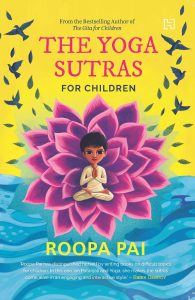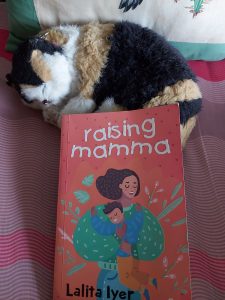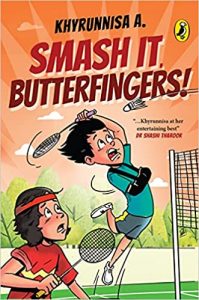Journalist and author Shabnam Minwalla is well known for her fantasy fiction for children. She was recently at the Tata Literature Live! The Mumbai LitFest where she conducted a workshop titled “A Little Bit of Magic”. Designed for children between the ages 9 to 11, the session took on writing fantasy fiction. Bookedforlife caught up with the author, for a sneak peek into this fascinating world! Excerpts from our conversation..
What particularly appeals to you about the genre of fantasy fiction for children?
More and more children lead structured lives today. They have school, then classes, then homework. Even their entertainment these days is organized and packaged. Fiction, especially fantasy, allows them the freedom to imagine, to visit worlds beyond the one they inhabit. This is a space in which creativity and imagination have free reign. Here, they can break and twist and experiment with the rules.
Two of your books, The Six Spellmakers of Dorabji Street and The Strange Haunting of Model High School touch upon this genre. Can you share reactions of your young readers?

The Six Spellmakers of Dorabji Street is an adventure story set in a building in Mumbai. Six children live in this building and are enjoying a great summer holiday full of giggles and cricket when something terrible happens. Two mean old residents of the building decide to ban cricket in the compound, and to cut down the two beloved bimbli trees in the garden. When the adults are unable to help, and the authorities like the police and BMC refuse to help, the children realise they will have to save the trees themselves. So they decide to try their hand at magic.
Spellmakers, like all my books, is rooted in the very real Mumbai of today. The backdrop is familiar to urban Indian children. So, they are specially delighted when magic, fairies and fantastical elements pop up in their grey, crowded, bustling world. Spellmakers really touched a chord with Indian children. Many schools use it as a reader. Two Mumbai schools performed it as a school play. But what makes me happiest is the delighted response from my readers. Stuff like: “Aunty, I loved the fact that the fairy is called Mr Paritosh Makhija” or “Aunty, now I also keep looking for magic all the time,”.
The Strange Haunting of Model High School is set in a strict Mumbai school. There are three BFFs in Std 7B who need to outwit the wicked assistant headmistress. In the process, they receive unexpected help from the resident school ghost. Here too, the backdrop is realistic, with only a couple of elements of fantasy thrown in. Model High School is a dreary place, full of rules. The students often feel helpless in this unfriendly world. But the presence of the ghost helps the children to tackle the baddies, and to realise that they are not as powerless as they imagine. This book was a big hit as well. I keep running into children who can actually quote entire paragraphs! They also remember details that I have long forgotten. Many children tell me that they were inspired to write their own ghost stories after reading the book.

My new book (What Maya Saw) will be out by end December. It is meant for children between 11 and 14 and is about a girl named Maya who starts to see strange things when she attends a summer school at St Paul’s College in Mumbai. She see horns bulging out of the head of a college girl. Then she sees blood trickling out of the eye of a boy in her class. Soon she finds herself in the middle of a big adventure and historic clue hunt across Mumbai. In this book I have used fantasy as a tool to introduce children to their vibrant city — and to see the beauty that we often overlook.
You have also taught/facilitated children in the process of writing fantasy fiction. What are some of the things that teachers and parents must bear in mind while facilitating or encouraging writing work in this genre?
My workshops are about imagination and creativity. The first thing that I tell children is that everything that they do for the next hour MUST come only out of their imagination and observation, not from books or movies that they might have read or seen.
The next thing that I tell them is that here there are no rules. The children are creating their own worlds and characters. Only they can decide what works and what doesn’t.
I also tell them that when they are trying their hands at creative writing, they shouldn’t worry about stuff like spelling and grammar. They should allow the ideas to flow. The rest will come later.
I tell children that it is very important to watch the world around them. This is because only if they understand people and their own reality can they write convincing fantasy fiction.
Any specific tips that would help in guiding children about balancing the real and the magical when they write fantasy fiction?
I usually encourage children to start writing about places and situations that are familiar. They can use this as a springboard from which to leap into fantasy. Personally, I like stories based in reality that have a few elements of fantasy. But this generation has an insatiable appetite for more hardcore fantasy. I always warn budding writers that if they want to create an alternate world that is purely fantastical, they will have to imagine it very carefully and set the rules of this world. And then, they must stick to them. That is a massive exercise!
Do you think that creating guided writing prompts works well for most kids, or do they just prefer to write without any structure?
Guided writing prompts help initially. They get the ideas flowing. Also, they show budding writers that a single scenario can lead to a hundred stories. They show that the world of fiction is limitless. Of course, once the ideas start coming, then guided prompts are unnecessary.
What are some of the classics in the genre that you would recommend children read?
The Wishing Chair and The Magic Faraway Tree series by Enid Blyton, The Narnia series by C.S.Lewis, Coraline by Neil Gaiman and Inkheart by Cornelia Funke
Indeed, there is no dearth of literature in the genre of fantasy fiction for children. The genre is one that is becoming increasingly popular. Maybe it’s time to get our young readers take on flights of fantasy!





